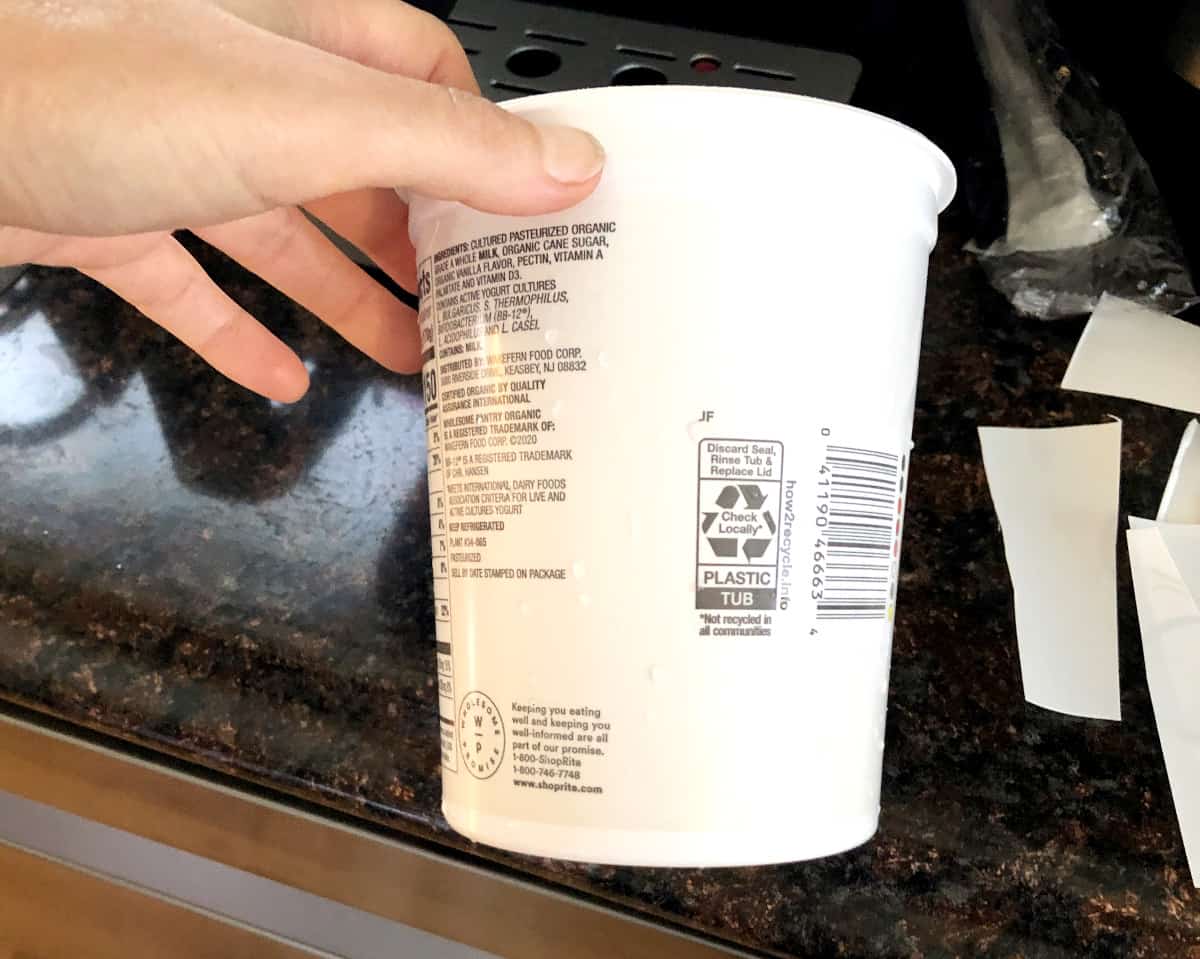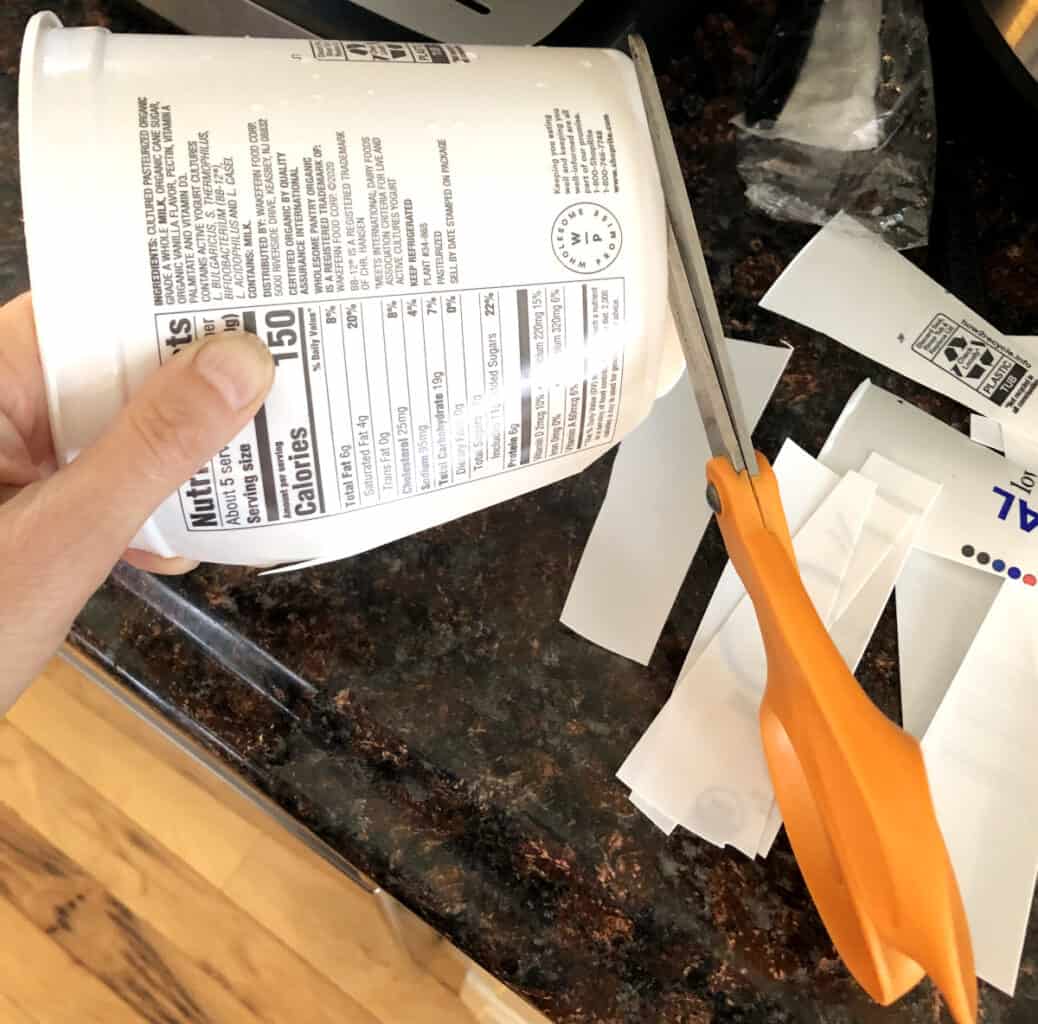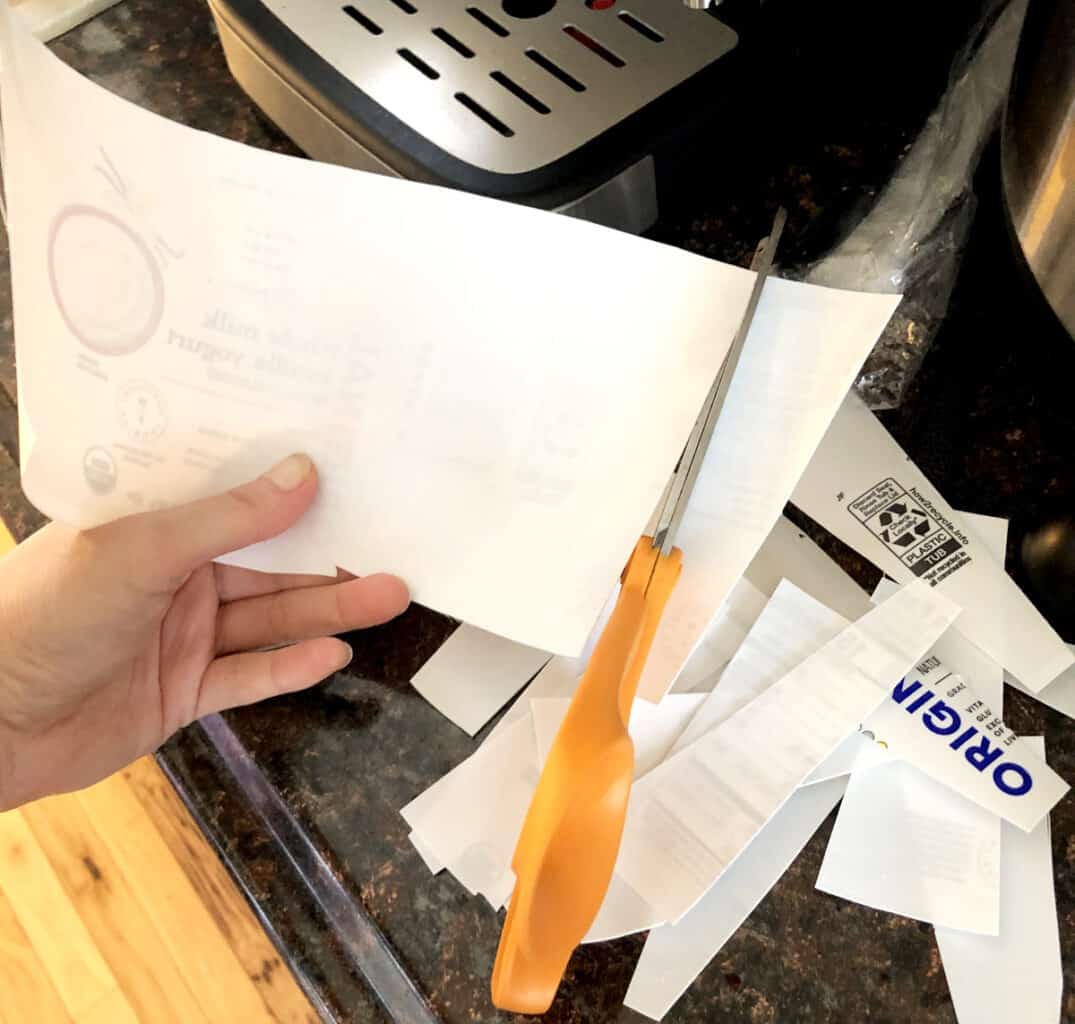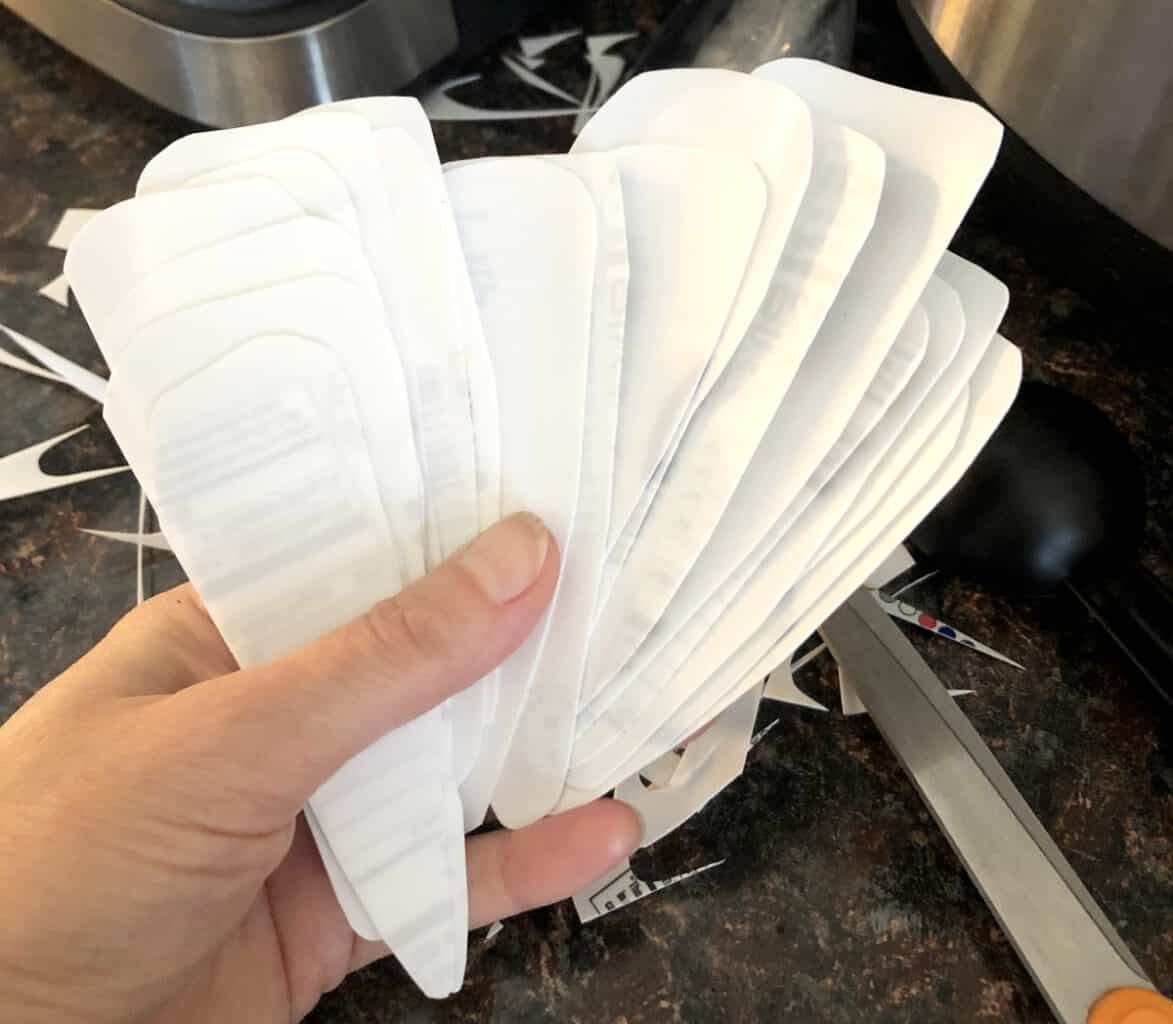There is a way to have an unlimited stock of plant labels completely free of charge. In this post, I will share with you how I make my own plant labels and how I never run out of them. I hope you too will benefit for years to come from this one of the best tips for a home gardener!
Here is how to make your own plant labels in 5 easy steps (with photo instructions below):
- Start with a thoroughly washed plastic yogurt container (any sturdy but playable plastic container usually from dairy products like cottage cheese, sour cream, ricotta cheese or mascarpone will work)
- Cut the bottom of the plastic container
- Cut the upper part of the container
- Straighten up the cylinder shape of the white plastic strip by rolling it opposite direction to how it naturally wants roll
- Cut out your custom plant labels as tall, as wide and in any shape, you like

What you need to make DIY plant labels
To make your own customized DIY plant labels is very easy and quick. Only these three items are needed:
- A clean and dry plastic container from yogurt or other plastic container usually from dairy products such as sour cream, ricotta, and mascarpone
- Scissors
- Black permanent alcohol-based marker

Why you should make your own plant labels
The reason to make your own plastic labels is because it does not cost you anything extra and you can have as many labels as you would like. You can also customize the labels by size, height, and shape needed. These plastic labels are sturdy while playable. They hold the black permanent alcohol-based marker very well and resist the outdoor weather conditions to last the whole growing season without getting brittle or broken. And because the plastic was used to carry food, it is food save and thus safe for your lovely edible plants, or any plants really. These plant labels are safe for your garden, pets, and your family. Once there is no more use for them, these IDY plant labels can be recycled the same way you recycle plastic bottles.

What material to use to make DIY plant labels
A food grade, non-harmful, non-toxic plastic from food carrying vessels such as yogurt containers, cottage cheese container, sour cream, ricotta cheese or mascarpone containers will work. Any size of the containers can be used to make your own free DIY plant labels.

The small containers will obviously give you the smaller sized labels. The medium and large containers work best if you are looking to make medium to large sized labels. One medium to large size container will provide you with at least 10 good size plant labels.
One way or another, yogurt or smaller plastic food containers have been used by home-gardeners for generations. Usually, they are used as pots for small seedlings, or to sell and exchange plants. If you are one of those gardeners who prefer to grow their seedlings in such containers, now you can expand their use, and make yourself some free plastic labels!
What labels are best for home gardeners
Best garden labels are the ones that are safe, non-toxic, non-harmful, sturdy but playable, and would last as long as possible. The labels should be easy to write on and should hold the writing well without fading or any color change. Labels should be wide enough so the gardener could write as much information as he or she needs to. They should be weather resistant, non-fading, and consistent throughout the whole growing season. Best labels are the ones that are also free of any cost.

By now, you probably think, these labels do not exist. And you would be right! They don’t, until you make them out of some plastic yogurt containers following the steps I shared above. Once you make your own plant labels the way you like them you will never go back to store to buy other.
What to use to write on plastic plant labels
Regular black alcohol-based permanent marker with a fine tip works best to write on plastic plant labels. It is most weather, sun and rain resistant, holds well to the plastic material and lasts the whole growing season. It holds well to the smooth plastic as well as to the matte or dull finishes. It does not fade much and keeps the writing clear and readable.
Previously I tried to use oil-based markers for artists, a regular pencil, and a regular pen on my plastic plant labels. But the best were black regular alcohol-based permanent markers with a fine tip.
Why you should label your plants
Labeling the plants in a vegetable garden has a lot of benefits. If you have avoided marking your plants because you did not want to spend on labels, now you can make your own and mark as many plants as you want.
There are many benefits of labeling the garden plants including:
- Keeping track of what seedlings and plants already occupy your growing space
- Saving the seeds and bulbs from certain plants
- Keeping the record of the cultivars you are growing
- For care instructions
There are many more benefits of labeling the plants. One properly written plant label can provide a gardener with lots of information about plants like how and when to fertilizer and so on. Read more about Why to label plants in garden and how to label them in one of my articles.
I hope you give it a try and make your own DIY plant labels. If you do, please share with me and the fellow readers how these worked for you.

Why to label plants in garden and how to label them
Vegetables that need very little space

